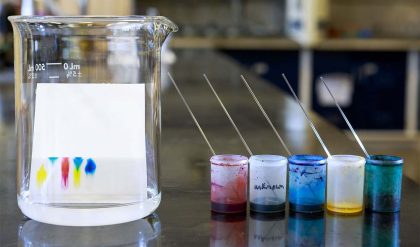Public acceptance of polymers is usually associated with an assurance of quality based on a knowledge of successful long-term and reliable tests. In contrast, much of the dissatisfaction with synthetic polymers is related to failures that might have been prevented by proper testing, design, and quality control. The American Society for Testing and Materials (ASTM), through its committees D-1 on paint and D-20 on plastics, has developed many standard tests, which may be referred to by all producers and consumers of polymeric materials.
There are also cooperating groups in many other technical societies: the American National Standards Institute (ANSI), the International Standards Organization (ISO), and standards societies such as the British Standards Institution (BSI) in England, Deutsche Normenausschuss (DNA) in Germany, and comparable groups in every nation with developed polymer technology throughout the entire world. Testing is done by industry to satisfy product specifications and for public protection using standardized tests for stress–strain relationships, flex life, tensile strength, etc. In the United States tests are overseen by the ASTM through a committee arrangement. For instance, Committee D-1 oversees tests related to coatings while Committee D-20 oversees tests on plastic.
New tests are continuously being developed, submitted to the appropriate ASTM committee, and after adequate verification through “round-robin” testing, finally accepted by concensus, as standard tests. These tests are published by the ASTM. Each ASTM test is specified by a unique combination of letters and numbers, along with exacting specifications regarding data gathering, instrument design, and test conditions making it possible for laboratories throughout the world to reproduce the test and hopefully the test results if requested to do so.
The Izod test, a common impact test, has the ASTM number D-256-56 (1961). The latter number, 1961, is the year the test was first accepted. The ASTM publication gives instructions for the Izod test specifying test material shape and size, exact specifications for the test equipment, detailed description of the test procedure, and how results should be reported. Most tests developed by one testing society have analogous tests or more often utilize the same tests so that they may have both ASTM, ISO, and other standardized society identification symbols.
A number of physical tests emphasizing stress–strain behavior will be covered in Here we will concentrate on other areas of testing, emphasizing thermal and electrical properties, and on the characterization of polymers by spectral means. Spectroscopic characterization generally concentrates on the structural identification of materials. Most of these techniques, and those given in Chapter 5, can be directly applied to nonpolymeric materials such as small organic molecules, inorganic compounds, and metals. The testing of materials can be based on whether the tested material is chemically changed or is left unchanged. Nondestructive tests are those that result in no chemical change in the material. Nondestructive tests include many electrical property determinations, infrared and ultraviolet spectroanalysis, simple melting point determinations, density and color determinations, and most mechanical property determinations. Destructive tests are those where there is a change in the chemical structure of at least a portion of the tested material. Examples include flammability property determination and chemical resistance tests where the test material is not resistant to the tested material.
What constitutes destructive and nondestructive tests may differ depending on the test, material, and definition. Thus, mechanical properties of solid polymers and viscosity test results of polymer melts may vary depending on the past history of the polymer. Prior stirring or chain orientation will influence most subsequent mechanical and viscosity test results for polymeric materials but will have little effect on the test results for small molecules. If destruction includes changes in polymer property, then melt viscosity and mechanical tests that influence chain location will be included in destructive testing for polymers, whereas if only chemical change is implied in destructive tests, then such tests will normally fall within nondestructive tests.

